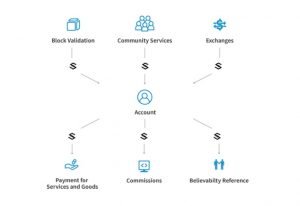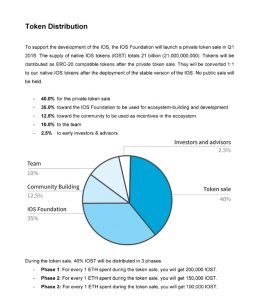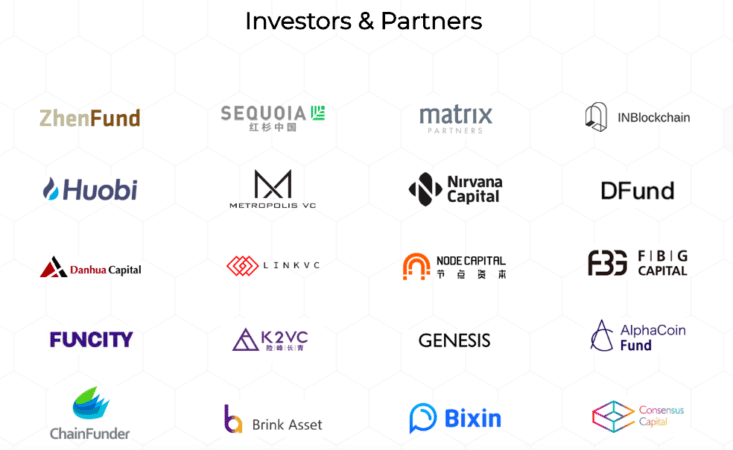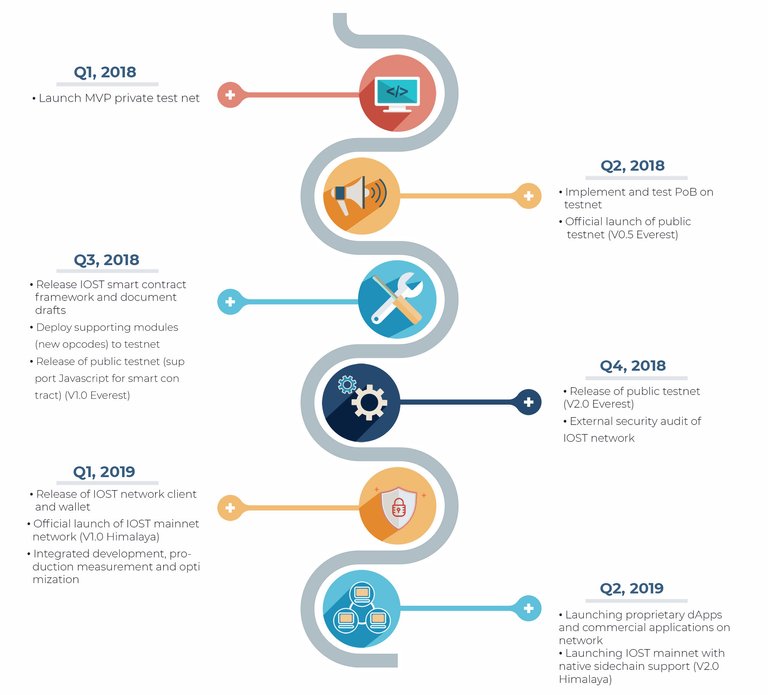INTRODUCTION

Generally, Security is a fundamental requirement, as without it individuals, organisations and even countries are open to various attacks from external sources. Digital Security is mostly needed for keeping people’s funds and data safe online. However, from the outset, the issue of security has been a problem for many people investing in digital assets. You don’t have to look hard to find plenty of stories about lost funds resulting from hackers and scammers gaining unauthorized access to private keys and passwords.
Also, the issue of scalability is one of the many problems that needs to be dealt with. Current blockchains do not scale particularly well. As the blockchain grows ( in terms of number of users and transactions), there is less room to accommodate new activities and users, which leads to congestion and frustration. The whole system struggles to process large volumes of information quickly and efficiently, and bottlenecks appear. In the Ethereum network, this was evident when the Cryptokitties craze exploded, and to a lesser extent, when ICOs are being launched or spammers are attacking.
Security and scalability problems are inconvenient and certainly holding back adoption and usability of blockchains, but they are not insurmountable. Indeed, there are plenty of solutions being proposed to deal with these problems, of which IOST is one.
PROBLEMS ASSOCIATED WITH THE CURRENTLY AVAILABLE SOLUTIONS
The current solutions of Centralized Internet Service Providers have a few intrinsic problems;
- They charge high commission fees
- Privacy of their users are violated
- Censorship
- Centralization
INTERNET OF SERVICE (IOS)
Current blockchain architecture is struggling to scale, and implies that any further additional adoption will result only in exorbitant fees, slow transaction times, and even stuck transactions. Ethereum is experiemnting with various solutions, including sharding, Casper and Plasma, and side-chains look promising. However, these are all some way off from being implemented fully. EOS is a new-born, barely tested, while others like Zilliqa and Rchain are still in production. The end game is to facilitate hundreds of thousands of TPS, as this will make even huge organizations like Amazon or big finance sit up and notice.
Internet Of Service is a decentralized and secure platform built on top of the Eethereum blockchain, with the aim of providing a definitive solution to the current issues plaguing the blockchain. It will offer , that is; it provides horizontal scalability with high transaction processing by utilising sharding architecture and consensus mechanism to achieve up to 100,000 secure transactions will be processed per second.
FEATURES
- scales for global use while ensuring the usability and integrity required for mainstream adoption
- committed to a permissionless and transparent network that is open source and accessible for all
- safeguards the immutability and fungibility of the ledger while ensuring decentralized governance
IOST
IOS Blockchain Architecture
The IOSchain has a similar structure to the Bitcoin and Ethereum blockchains, which use the gossip
protocols to disseminate nodes. However, the IOSchain splits data and states into shards based on
each node in the system. The memory of these nodes with the corresponding shards are able to
accommodate UTXOs, Unspent transactions. However, there are some problems associated with this,
such as dividing the system into shards, reaching consensus in each shard and performing inter-shard
transactions; the solution to these is to provide a Random number generation protocol.
HOW THE PLATFORM WORKS
Efficient Distributed Sharding (EDS)
One needs to have a basic knowledge of what Sharding is before delving into EDS. As it was mentioned above, the problem associated with selecting nodes and ; into which shards, and some other related ones can be solved by using a Distributed Random Protocol (DRP); a client-server protocol which assists the server in communicating with another set of servers. Through non-knowledge proofs (NZIK) and publicly verifiable secret sharing (PVSS), it's possible to create an unforgeable uniformly random value.
The DRP works at its best in the absence of malicious or failing nodes. However, having a perfect DRP is not always feasible and to prevent any risk that this might pose, IOS will elect leaders using Algorand and Omniledger. This system guarantees that the DRP protocol is run by the leader nodes and if otherwise, they will simply be excluded from the network.
Operability During Epoch Transitions
Out of the many available shard configuration schemes, IOSchain uses a dynamic rolling scheme which swaps batches of nodes in and out during transitions between epochs, thereby allowing an idle period after which the network can start processing transactions. A node-to-shard transition protocol, also known as TransEpoch, ensures all other nodes do not cease working and the new ones are downloading data and bootstrapping.
With the TransEpoch algorithm, the Byzantine Fault Tolerance (BFT) consensus is kept on each node, implying that; the possibility of any malicious nodes taking over the shard during the transition is very low.
Inter-Shard Tansactions
Since there is every possibility that transactions might want to happen across shards, Byzantine Shard Atomic Commit protocol, also known as Atomix protocol, is implemented to enable this.
Check out its working principle below;
Let assume the need arises for a node a in shard A to send some funds to a node b in
shard B. Once the transaction is approved by the nodes in Shard A, it will be logged into A blockchain and at the same time, the funds in a will be locked into a transaction message and sent to shard B. At this point, there is a need for validation which is sent by Shard A to Shard B. The approval of this transaction by the nodes in B makes b to receive the funds. However, if the transaction is rejected by these nodes; thode in B, the funds are returned back to a.
Proof-of-Believability (PoB)
The Proof-of -Believability consensus protocol is an idea proposed for the IOSChain in order to ensure keep safety and increase throughput, unlike the traditional blockchain systems that consist of a quid pro quo. With the PoB in place, there is a high level of assurance that nodes will not misbehave. This should encourage a significant throughput in the transaction.
The Proof-of -Believability also separates all IOS nodes into two leagues which are; the believable and normal league. Transactions from the believable league are rapidly processed and thereafter, validated and verified by the normal league. For a node to be selected as a believable league, it must meet up with some standards in terms of a believability score. This constitutes: token balance, reviews and contributions.
The normal nodes serve the function of ensuring that believable nodes remain honest in their way of acting and they are able to fish out any believable nodes in the case of suspicious actors. Essentially, believable nodes have to be consistent since any inconsistencies or misbehavior will definitely put land them into trouble, as they in the sense that they will suffer the loss of tokens and their believability score will turn to Zero.
MSB Generation Protocol
Current blockchains challenged by the rapid expansion of the size of their storage, which poses high storage and boostrapping costs on validators. To minimize this on IOSChain however, a blockchain pruning storage approach will be used; Micro State Blocks generation will be used for this.
With this in place, only the previous blocks of leaders are stored and the blockchain state will be distributed across multiple shards. Also, the availability of this protocol will ensure that only the last part of the blockchain will be validated instead of going through all the blocks.

IOS Token (IOST)
The IOS Token powers the IOS platform. It will serve as a means of exchange and it is an important factor for determining the Believability score. Payments will be made using IOST to those that help validate transactions.
Token Distribution Analysis Below

40%: Token Sale
35%: IOS Foundation
12.5%: Community Building
10%: Team
Servi
Just like the IOSToken, Servi is another form of token that plays an important role in the
determination of a node’s believability score. Servi is actually received when services are provided to
the community in any way. However, Servi can be traded and it resets to zero when a block is being
validated.
MEET THE IOS TEAM


ADVISORS

INVESTORS & PARTNERS

TRADING
Not so long after the ICO, there was an appreciable increase in the price of IOST, ~$0.13. which would probably its all-time high price for now as no one knows what might happen in the future. However, immediately after the pump in January, there was a rapid decrease in its price almost to its ICO levels and the dip continues through March before turning around. At the end of March, the price moon rose steadily and currently at sits at ~$0.05.
IOSToken can be purchased on Binance, Huobi or OKEx with either BTC or ETH and can be stored in a wallet that supports ERC-20 token standard.
ROADMAP

CONCLUSION
In a bid to create solutions to the major problems affecting various blockchains, IOS has devised means of tackling security and scalability. If implemented successfully, it has the potential to change a whole lot of things.
A The success of this project will play significant roles in the development of the blockchain architecture and could help improve negative perceptions of blockchain’s ability to handle high transactional volumes. It is a missing piece in bringing true mass adoption into a reality.
FOR MORE INFORMATION & RESOURCES
IOST Website
IOST Github
IOST Medium
IOST Telegram
IOST Twitter
IOST Reddit

Upvoted.
DISCLAIMER: Your post is upvoted based on curation algorithm configured to find good articles e.g. stories, arts, photography, health, etc. This is to reward you (authors) for sharing good content using the Steem platform especially newbies.
If you're a dolphin or whales, and wish not to be included in future selection, please let me know so I can exclude your account. And if you find the upvoted post is inappropriate, FLAG if you must. This will help a better selection of post.
Keep steeming good content.
@Yehey
Posted using https://Steeming.com condenser site.
As a follower of @followforupvotes this post has been randomly selected and upvoted! Enjoy your upvote and have a great day!
Hello! I find your post valuable for the wafrica community! Thanks for the great post! We encourage and support quality contents and projects from the West African region.
Do you have a suggestion, concern or want to appear as a guest author on WAfrica, join our discord server and discuss with a member of our curation team.
Don't forget to join us every Sunday by 20:30GMT for our Sunday WAFRO party on our discord channel. Thank you.